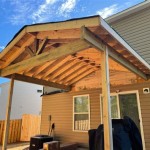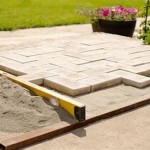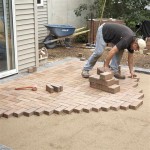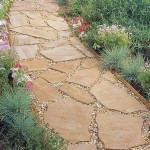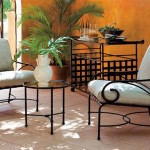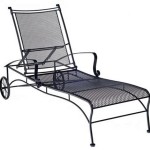Closed In Patio Decorating Ideas for Enhanced Outdoor Living
Transforming a closed-in patio into a functional and aesthetically pleasing extension of a home requires careful consideration of space, style, and purpose. The enclosed nature of these spaces offers a unique opportunity to create an outdoor haven protected from the elements, enabling year-round enjoyment. A thoughtfully decorated closed-in patio can serve as a relaxation zone, a dining area, an entertainment space, or even a home office, significantly expanding the livable area of a residence. The decor should reflect the homeowner's personal taste while maximizing comfort and functionality. This article delves into various decorating ideas tailored to elevate the appeal and usability of a closed-in patio.
Optimizing Space Utilization in Enclosed Patios
Efficient space management is paramount in closed-in patio design, especially in smaller areas. Overcrowding can make the space feel cramped and uncomfortable, negating the goal of creating a relaxing outdoor environment. Strategies for optimizing space utilization include selecting furniture with appropriate proportions, incorporating multi-functional pieces, and utilizing vertical space. The choice of furniture should align with the patio's dimensions. Bulky, oversized pieces are unsuitable for smaller patios, while smaller, more streamlined furniture might get lost in a larger space. A balance between comfort and spatial efficiency is crucial.
Multi-functional furniture provides a practical solution for maximizing usability. A storage ottoman can serve as both a footrest and a storage container for cushions or blankets. A fold-down table can be used for dining or work and then collapsed to free up space when not in use. Pieces that can be easily moved or reconfigured also contribute to adaptability. Utilizing vertical space is another effective strategy. Shelving units, wall-mounted planters, and hanging chairs can add visual interest and provide storage without consuming valuable floor space. These elements draw the eye upwards, creating a sense of spaciousness.
Consider the traffic flow within the patio. Arranging furniture in a way that facilitates easy movement is essential. Avoid placing furniture in areas where people frequently walk, creating obstructions that make the space feel cluttered and inconvenient. The strategic placement of rugs can also define different zones within the patio, such as a seating area and a dining area, further enhancing the sense of organization and spaciousness. Light colors and reflective surfaces contribute to a brighter and more open feel. Mirrors, light-colored paint, and glossy finishes can all help to visually expand the space.
Selecting Appropriate Furniture and Materials
The choice of furniture and materials plays a significant role in the aesthetic and functional appeal of a closed-in patio. Durability, comfort, and style should all be considered when making these selections. Given that the patio is enclosed, the furniture is somewhat protected from the harshest elements, but resistance to moisture and UV exposure is still important. Materials like synthetic wicker, powder-coated aluminum, and teak are popular choices for outdoor furniture due to their weather resistance and durability.
Upholstery fabrics should be chosen with similar considerations. Fabrics that are fade-resistant, water-repellent, and easy to clean are ideal for outdoor use. Sunbrella and other outdoor-rated fabrics are specifically designed to withstand the elements and maintain their appearance over time. Comfort is equally important. Cushions and pillows should be generously padded and ergonomically designed to provide ample support. Consider the overall style of the home when selecting furniture and materials. The patio should complement the existing architecture and interior design, creating a seamless transition between indoor and outdoor spaces.
The flooring material is another important consideration. Options include tile, stone, concrete, and composite decking. Tile and stone offer durability and aesthetic appeal, while concrete provides a more modern and minimalist look. Composite decking is a low-maintenance option that mimics the look of wood. Regardless of the material chosen, ensure that it is slip-resistant and easy to clean. Incorporating natural elements can enhance the patio's connection to the outdoors. Wood accents, stone features, and potted plants can create a sense of tranquility and relaxation. These elements also add texture and visual interest to the space.
Incorporating Lighting and Ambiance
Lighting is a crucial element in creating the desired ambiance in a closed-in patio. Well-placed lighting can enhance the space's functionality, safety, and aesthetic appeal. A combination of ambient, task, and accent lighting is often the most effective approach. Ambient lighting provides overall illumination for the patio, creating a soft and inviting glow. String lights, lanterns, and recessed lighting are popular choices for ambient lighting. Task lighting is focused lighting designed for specific activities, such as reading or dining. Table lamps, floor lamps, and adjustable spotlights can provide targeted illumination for these tasks.
Accent lighting is used to highlight specific features of the patio, such as plants, artwork, or architectural details. Spotlights, uplights, and downlights can be used to create dramatic effects and add visual interest. Consider the color temperature of the lighting. Warm lighting (2700-3000K) creates a cozy and inviting atmosphere, while cool lighting (4000-5000K) provides a brighter and more energizing feel. The choice of color temperature should align with the intended use of the patio and the overall design aesthetic. Dimmers allow for adjusting the intensity of the lighting, creating different moods and atmospheres.
Other elements that contribute to the ambiance of a closed-in patio include textiles, accessories, and sound. Throw pillows, blankets, and rugs add texture, color, and comfort to the space. Accessories such as candles, lanterns, and decorative objects can personalize the patio and reflect the homeowner's style. A water feature or a sound system can add a sense of tranquility and relaxation. Carefully consider the acoustics of the patio. Hard surfaces can reflect sound, creating an echoey environment. Soft furnishings and plants can help to absorb sound and create a more comfortable acoustic environment. The addition of curtains or blinds on the windows will help to control the amount of sunlight entering the patio, and also provide privacy.
Creating a successful closed-in patio involves a thoughtful combination of space planning, furniture selection, and ambiance creation. These elements working in harmony transform a simple enclosed space into a personalized retreat that enhances the enjoyment and value of the home.

Screened In Patio And Porch Ideas 40 Decorating Tips

Screened In Patio And Porch Ideas 40 Decorating Tips

Screened In Porch Ideas 13 Beautiful Decorating Tips Design Apartment Patio Decor

63 Comfy And Relaxing Screened Patio Porch Design Ideas Digsdigs

Ideas For Amazing Screened Porch And Deck Designs

Discover 99 Enchanting Enclosed Patio Ideas For Your Home Design
:max_bytes(150000):strip_icc()/backyarddecorcraftberrybush-1-2-b428f620a1db46cea4cbb59fe659e754.jpg?strip=all)
25 Enclosed Patio Ideas To Make Your Outdoor Space Cozy

Columbia Sc Screened Porch Design Ideas

63 Comfy And Relaxing Screened Patio Porch Design Ideas Digsdigs

Join Me In The Screened Porch A Cultivated Nest
Related Posts

